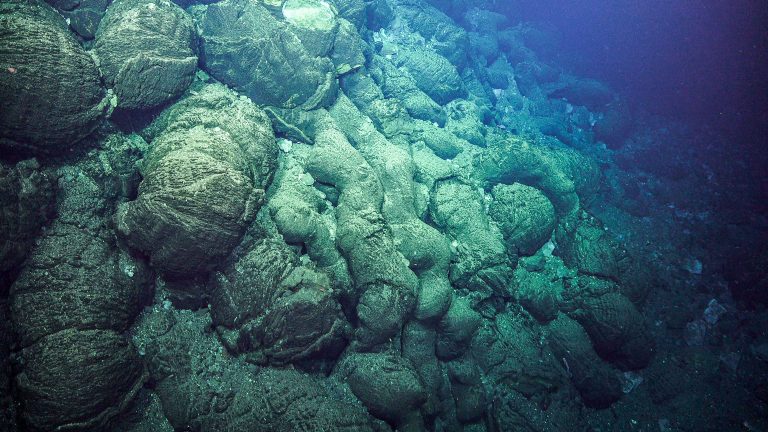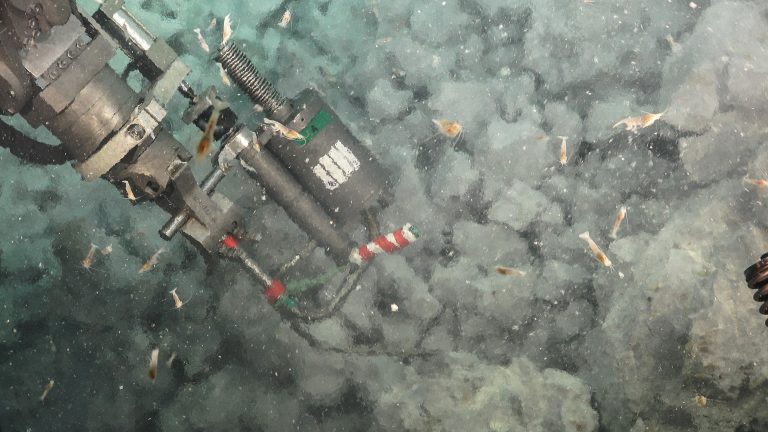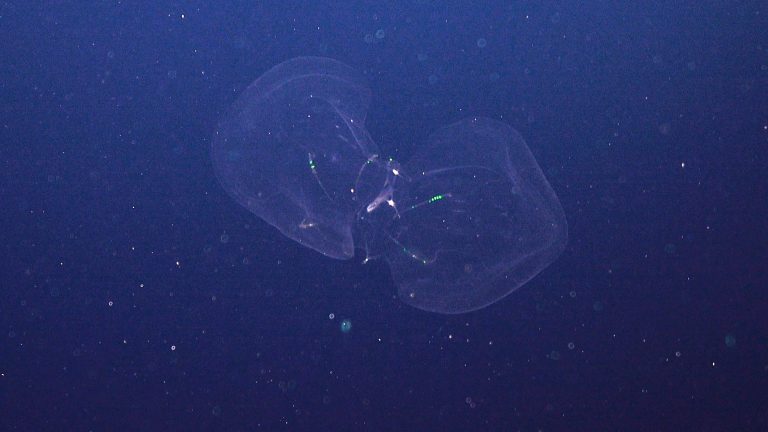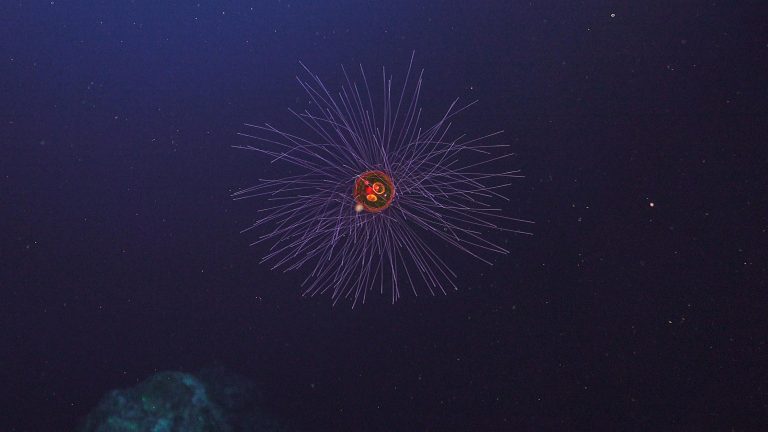It takes about an hour and a half for the Remotely Operated Vehicle (ROV) SuBastian to reach the 1900 meter mark near the bottom of the ocean. “Bottom in sight!” declares Chief Scientist Dr Ken Rubin, in charge of making video observations, controlling one of the submersible’s cameras, narrating the dive for the avid live-stream followers, and directing the entire operation for four hours, until he is relieved by Dr Bill Chadwick. The entire dive, like every day, will take around twelve hours total.

The first three dives of the Underwater Fire expedition has taken place at West Mata Volcano. This is an especially interesting location as the scientists know it is very active and in constant evolution. Depth anomalies announce the spots where recent volcanic activity has altered the geological landscape. Based on the information acquired during the first leg of this cruise, the team has selected several places to explore. These spots have changed since they were last surveyed and the objective is to gather as many clues as possible in order to be able to reconstruct recent activity.
Pillows… Pillows Everywhere
It might be ironic that the sleep-deprived and hard-working team spends most of their days looking at pillows. Pillow lava, that is. Pillow lava only forms underwater and it takes its name from its characteristic shape. As lava flows under the cold waters of the deep-ocean, the exterior of the lava cools quickly and solidifies while hot molten lava still flows on the inside. This causes the lava to create rounded and tubular structures that cover the seafloor in many areas that the ROV surveys.
The science team has noted how much ash is covering the recent eruption sites that they have visited. The eruptions at West Mata seem to produce both flows of pillow lava, and thick blankets of ash that cover the pillow lava. This indicates that the eruptions are both “effusive” (producing fluid lava flows) and explosive, perhaps even at the same time. The ROV video observations at West Mata in 2009 show some of this dual-mode of effusive/explosive activity. During this expedition, we see pillow lava exposed on steep slopes and at the sharp edges of the lava flows. On flatter slopes, the pillows are almost completely covered with several meters of ash. The team is collecting samples of both the lava flows and ash to learn more about recent eruptions and how the volcano works.

Ongoing and Relentless
Volcanism is one of the main geological processes on our planet. It is in constant evolution, and West Mata is an excellent example. Looking at the headwall of a landslide scarp that formed six years ago, the team finds broken rocks; and on a very steep face, they observe in-place lava that had poured down the slope at some point after the wall formed. As the scientists approach this interesting feature, they see more intense hydrothermal activity and microbial mats than they did in their 2012 survey with copious shrimp communities living around the vents. They were surprised to find that even in a very steep and unstable place where rocks are likely falling, the environment is still able to vent hot water and serve as an inviting habitat for vent species. In general, the venting areas appear to be more active this year than when last seen in 2012.
All these observations invite the team to begin discussing hypotheses. Dr Rubin reflects: “The most amazing thing to me was when we found the youngest lava on the volcano that we know about, and yet it already looks like it cooled off. Whereas the day before, we went to a lava flow that is four years old and it was still hot and had life all over it. We are starting to think that up near the summit of the volcano, what fuels the hydrothermal system is a little deeper, consistent, and persistent. So maybe this area is hot not because the lava flow is hot but because it’s hot beneath.”

Surrealism
Organisms feed off the chemicals being poured out by the hydrothermal system, but they also take advantage of the microbial mats that grow in these seascapes not long after the lava begins cooling down. Isolation, darkness, texture, and color paint mesmerizing landscapes in the screens of the Science Control Room. One particular location stands out. The sediment is thick and hosts plenty of alternating orange and white microbial mats. Normally, these two kinds of mats form under different temperatures, so you only find an area with white or yellow. It was striking to see both kinds in such proximity.

The seascapes are hypnotizing, and the geological features tell enthralling stories. As if that was not enough, every now and then otherworldly creatures take the stage, forcing everyone to realize just how utterly different this environment is, even right here, on our own planet Earth. The first dives were exploratory and focused on collecting lava samples. The next step is to return to these vent sites to concentrate on the hydrothermal systems and their biological communities. And our curiosity abounds.



